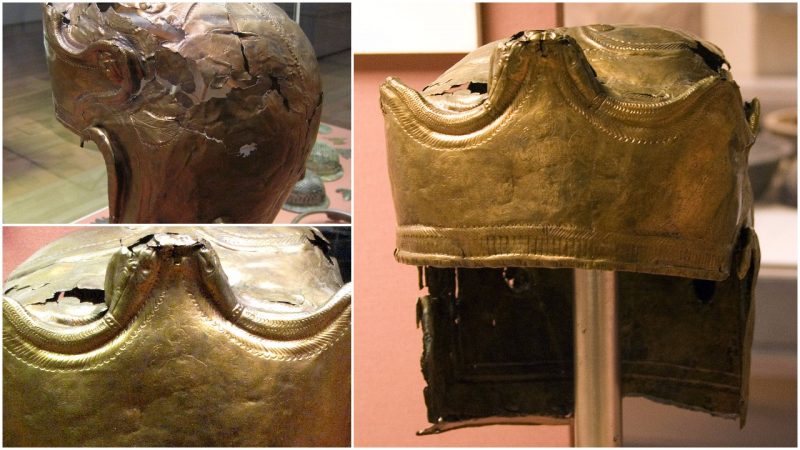The Guisborough Helmet is a Roman cavalry helmet found in 1864 near Guisborough in Yorkshire, England.
It was originally fitted with a pair of protective cheek-pieces which have not survived, however the holes by which they were attached can be seen in front of the helmet’s ear guards.
It is lavishly decorated with engraved and embossed figures, indicating that it was probably used for displays or cavalry tournaments, though it may well have been intended to be worn in battle as well.
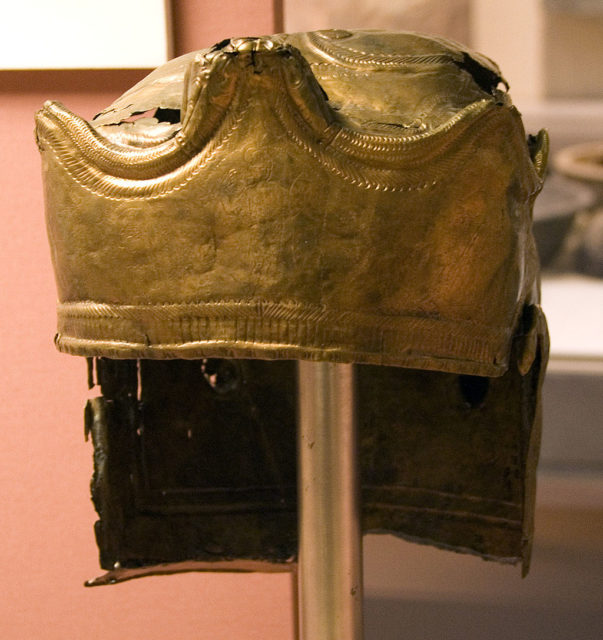
Made from copper alloy in the 3rd century AD, the helmet’s brow band is engraved and embossed with representations of shrines (aediculae) housing the deities Victory, Mars and Minerva, all of whom were associated with war.
Prancing horsemen are depicted between the figures. The brow band has three diadem-like peaks bordered by writhing snakes whose heads meet at the center, forming an arch above the central figure of Mars. Two bosses stand out at the rear of the helmet, at the center of embossed flowers.
The sides and top of the helmet are embossed with feathers and a feather-like pattern. The design is similar to others found in Worthing, Norfolk and Chalon-sur-Saône in France, and represents a distinct form of cavalry helmet, dubbed the “Guisborough type”, which can be distinguished by three peaked scallops on the brow band
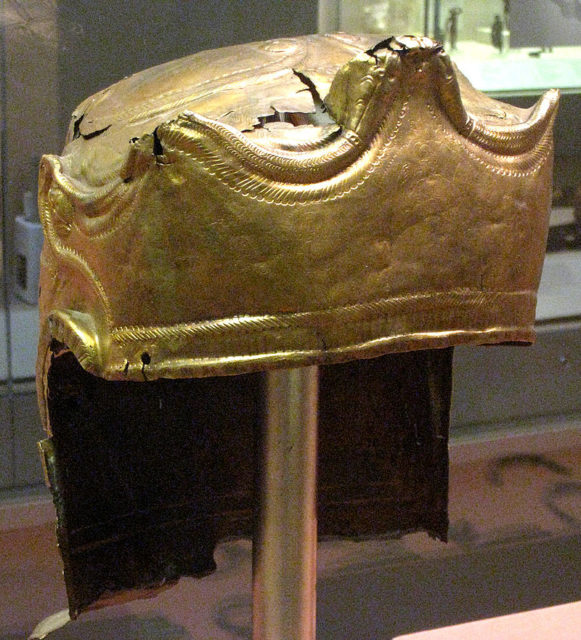
The helmet remains something of an enigma: it was buried in a compressed and folded state, completely isolated from any other objects from same period and at some considerable distance from any known Roman sites; how and why it came to be deposited there is still unknown.
However, the Dutch historian Johan Nicolay has identified a “lifecycle” for Roman military equipment in which ex-soldiers took items home with them as a reminder of their service and occasionally disposed of them away from garrison sites as religious offerings or buried them with the dead.
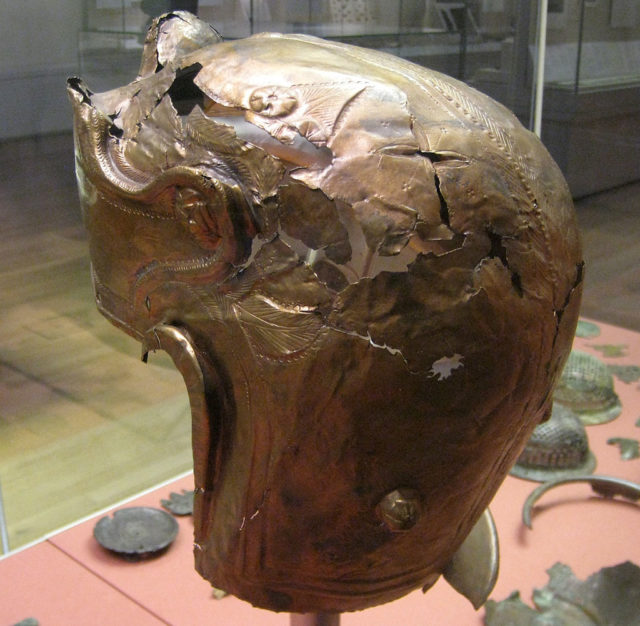
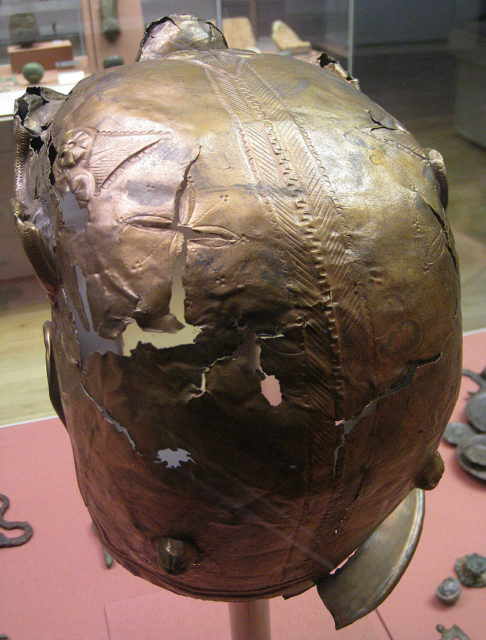
After its discovery the helmet was repeatedly misidentified; at first it was incorrectly described as a breastplate of unknown origin (though thought it to be of “Oriental workmanship”) and age.
In 1868 Thomas Richmond, a local historian, erroneously assigned it to “a late Celtic, or early Anglo-Saxon period”.
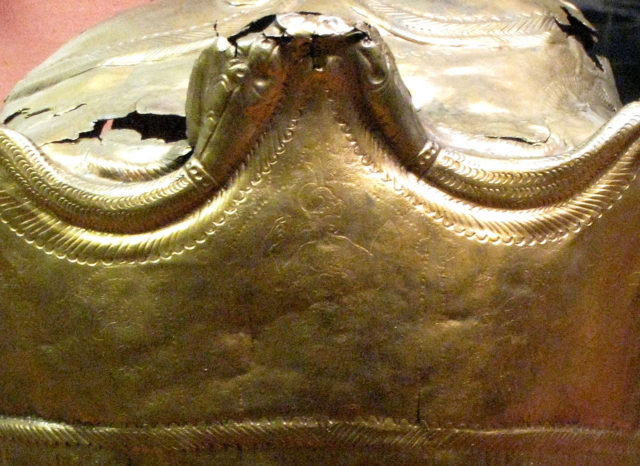
In 1878, Frederick B. Greenwood, who owned the land on which the helmet had been found, presented it to the British Museum.
It was restored at the museum by Robert Cooper Ready, and finally was correctly identified as a Roman helmet.It is currently on display in the British Museum’s Roman Britain section in Room 49.
